Health Care > QUESTIONS & ANSWERS > NUR2063 Pathophysiology – Examination Blueprint – Final exam (All)
NUR2063 Pathophysiology – Examination Blueprint – Final exam
Document Content and Description Below
1. Neuro system features – structure of neurons with myelin sheaths a. Needs of neuro system to function: Oxygen and Glucose b. Autonomic nervous system: Controls smooth muscle, unconscious respon... se affecting the heart rate, BP, intestinal motility i. Parasympathetic: Rest and Digest vs. sympathetic systems: Fight or Flight 2. Disorders a. Hydrocephalus: Common condition with excess CSF accumulation i. Risk factors: premature, pregnancy complications, nervous system tumors, CNS infections, cerebral hemorrhage, severe head injury ii. Manifestations – children: Large head in infancy, bulging fontanel, Lethargy; irritability, Seizures, Eyes that gaze downward, High-pitched cry, Feeding difficulties vs. adults: Headache with N/V, Blurred vision or diplopia, Uncoordinated movements, Irritability; personality changes, Sluggish pupil reactions iii. Diagnosis: H & P, including measurement of head circumference, Neuro assessment, Cranial CT/MRI/Xray, Prenatal US iv. treatment: Surgical repair of blockage, Shunt placement, Antibiotic treatment if caused by infection, Lifelong follow-up exams, Multidisciplinary team management b. Meningitis: Inflammation of the meninges usually due to infection i. What can cause it: Bacterial: Neisseria meningitidis, Streptococcus pneumoniae, Haemophilus influenzae Viral: Enterovirus; measles, Influenza; herpes, Tumors, Allergens ii. Risk factors: Less than 25 yrs old, living in community setting, Pregnancy, Immunodeficiency, Working with animals iii. Complications: Permanent neuro damage, Seizures, Hearing loss, Blindness, Speech difficulties, Renal failure, Shock, Death iv. Manifestations: Headaches, altered mental status, phonophobia, muscle fatigue, sever muscle pain, dislike bright lights, NV, v. Diagnosis: H & P, Throat cultures, Lumbar puncture with CSF analysis, PCR, Head CT vi. Treatment: Antibiotics (if bacterial), Hydration, Fever management, Preventative vaccine c. Encephalitis i. What is it: Inflammation of brain and spinal cord, usually d/t infection ii. what happens: iii. Causes: Bacterial: Lyme disease, TB, Syphilis 1. Viral causes: Coxsackievirus, Poliovirus, Herpes virus, Cytomegalovirus, Measle, Mumps, West Nile virus iv. Manifestations: Flu-like symptoms, Headache/nuchal rigidity (neck pain), Confusion; hallucinations, Personality changes, Diplopia, Seizures, Muscle weakness; tremors; paresthesia or paralysis, Loss of consciousness, Abnormal deep tendon reflexes, Rash v. Diagnosis: H & P, Head CT/MRI, EEG, LP with CSF analysis, PCR, Serum viral antibodies vi. Treatment: Rest, Nutrition + sufficient hydration, Respiratory support, Reorientation & emotional support, Analgesics & antipyretics to relieve headaches and fever, Antiviral agents (if viral), Antibiotic therapy (if bacterial), Corticosteroids to reduce cerebral edema, Sedatives to treat irritability and restlessness, PT, OT, Speech therapy, NUR2063 Pathophysiology – Examination Blueprint – Final exam 1 Prevention, Vaccinations, Wear protective clothing (mosquito prevention), Eliminating standing water sources d. Traumatic brain injury (TBI) i. What it is: A sudden violent blow or jolt to the head (closed), penetrating (open) head wound ii. What are causes: Falls, MVC, penetration of object, assaults iii. Complications: Can be from one event or multiple mild events, Changes in thinking, sensation, language or emotions, Seizures, Memory decline, Depression, Death, Alzheimer’s disease, Parkinson’s disease iv. Closed: the brain jolts forward hitting the frontal bone, then back to the occipital bone. Or side to side vs. open head injuries: fractures or something penetrating the head v. Manifestations: unable to recall details, pupil unequal in side, asymmetrical facial features, impaired senses, lack of coordination, bradypnea, hypotension vi. Diagnosis: H & P with Glasgow Coma Scale, Head CT/MRI, ICP monitoring vii. Treatment: Rest, Analgesics (specifically acetaminophen), Cold compresses, Osmotic diuretics (ex: mannitol), Antiseizure meds, Sedatives, Surgery, Rehabilitation, PT, OT, Speech viii. Prevention: seatbelts, car seats, helmets, e. Increased intracranial pressure i. Causes: TBI, Tumors, Hydrocephalus, Cerebral edema, Hemorrhage ii. Manifestations: pupillary changes, impaired eye movement, changes in mobile ability, seizures, high systolic BP, Low pulse, vomiting, change in speech, iii. Compensatory mechanisms 1. Monro-Kellie hypothesis: Increase in volume of one component must be compensated for by a decrease in volume of another. Accomplished mostly by shifts in CSF and blood volume 2. Autoregulation: Blood vessels dilate to increase blood flow and constrict if ICP increases 3. Cushing’s reflex: The hypothalamus increases sympathetic stimulation when the mean arterial pressure (MAP) pressure drops below the ICP Causes vasoconstriction, increased cardiac contractility and increased cardiac output a. Cushing’s triad: Increased blood pressure, Bradycardia, Cheyne-Stokes respirations iv. Diagnosis: same as TBI v. Treatment: Based on underlying cause, Respiratory support, Semi-Fowler’s position, Drain excess CSF, Medications, seizure precaution vi. Complications: Brain herniation, feared complication of increased ICP, Not reversible, Death is the result f. Hematomas i. What they are: A collection of blood in tissue developed from ruptured blood vessels ii. Types 1. Epidural – Bleeding between dura and skull –usually an arterial tear 2. Subdural – Between dura and arachnoid layers – usually due to a small venous tear [Show More]
Last updated: 2 years ago
Preview 1 out of 20 pages

Buy this document to get the full access instantly
Instant Download Access after purchase
Buy NowInstant download
We Accept:

Reviews( 0 )
$7.50
Can't find what you want? Try our AI powered Search
Document information
Connected school, study & course
About the document
Uploaded On
May 07, 2022
Number of pages
20
Written in
Additional information
This document has been written for:
Uploaded
May 07, 2022
Downloads
0
Views
68


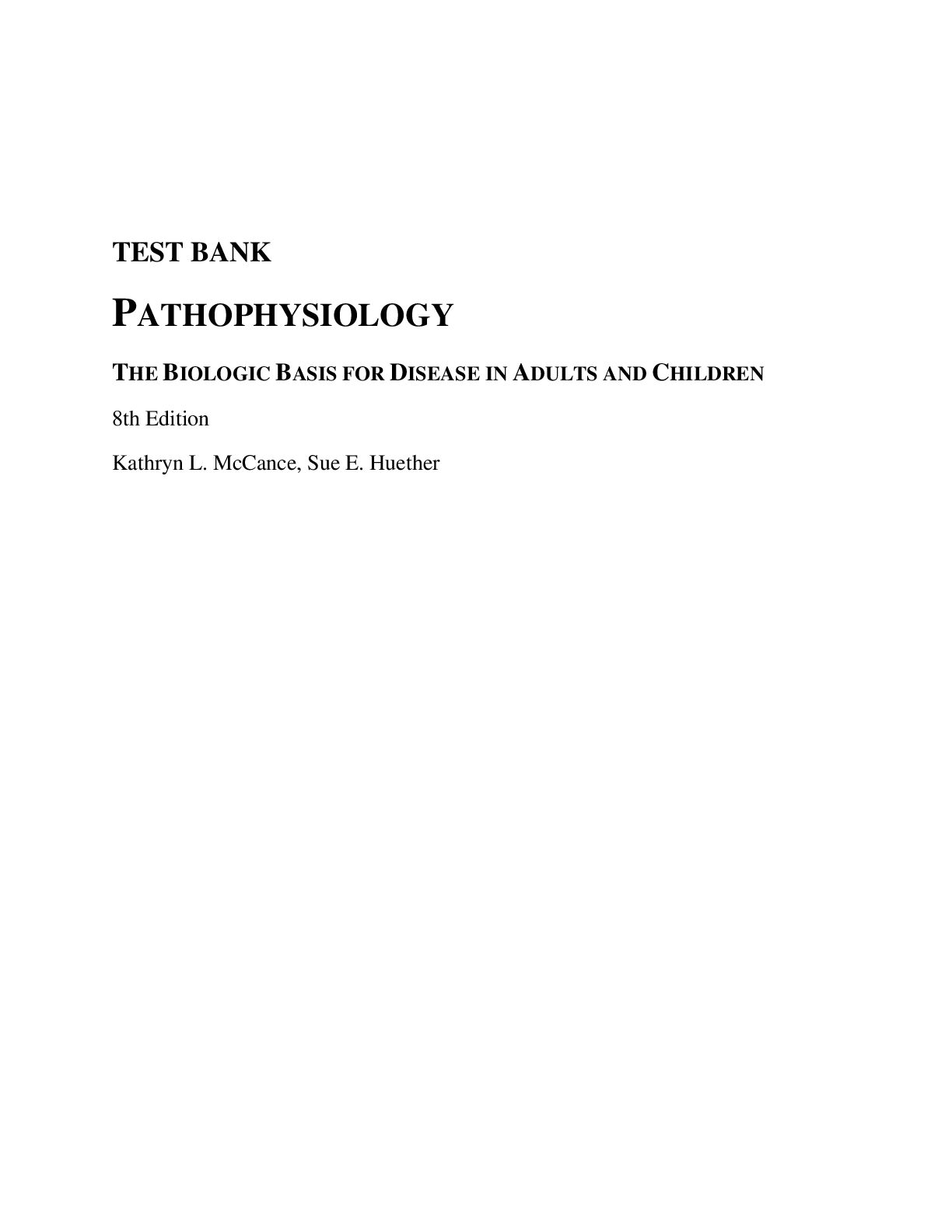


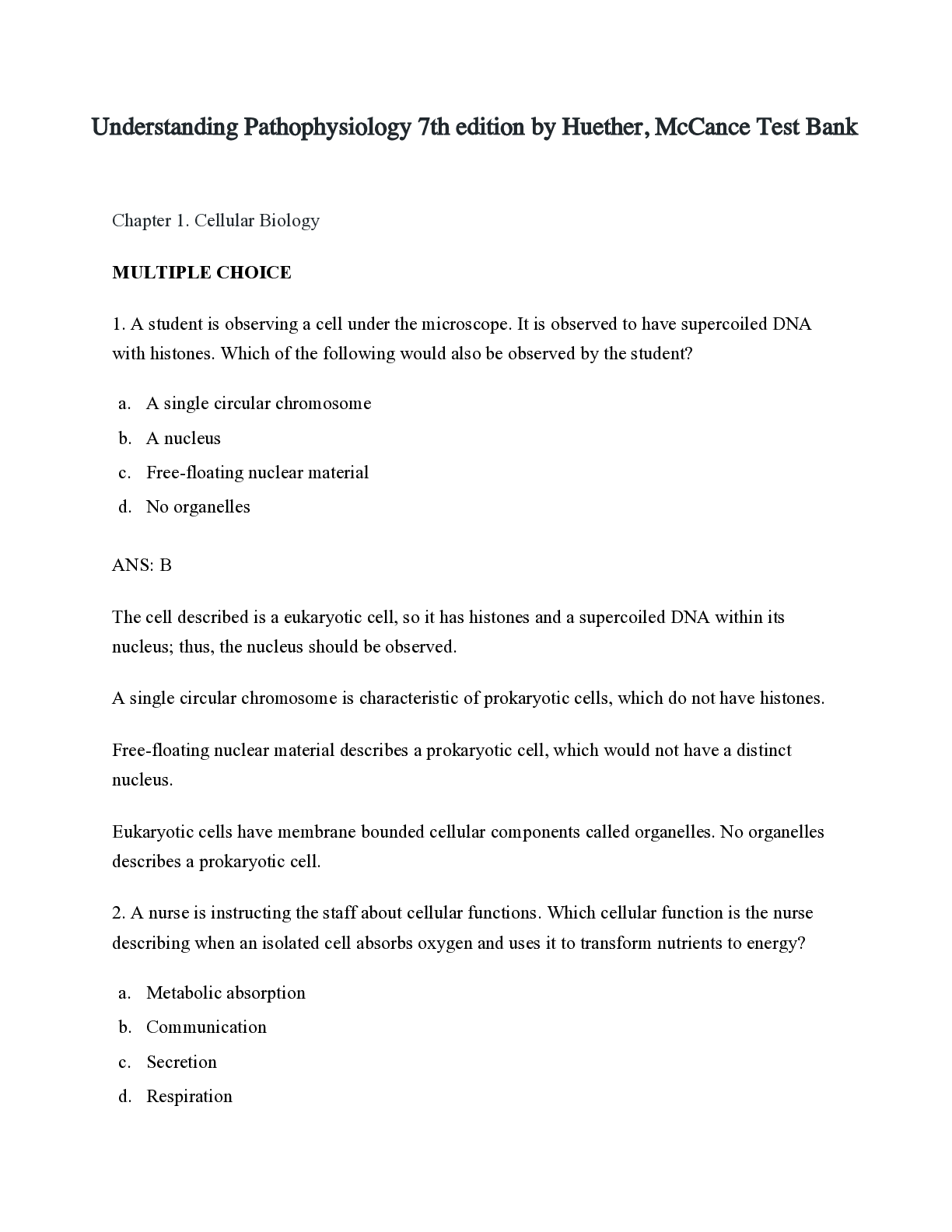
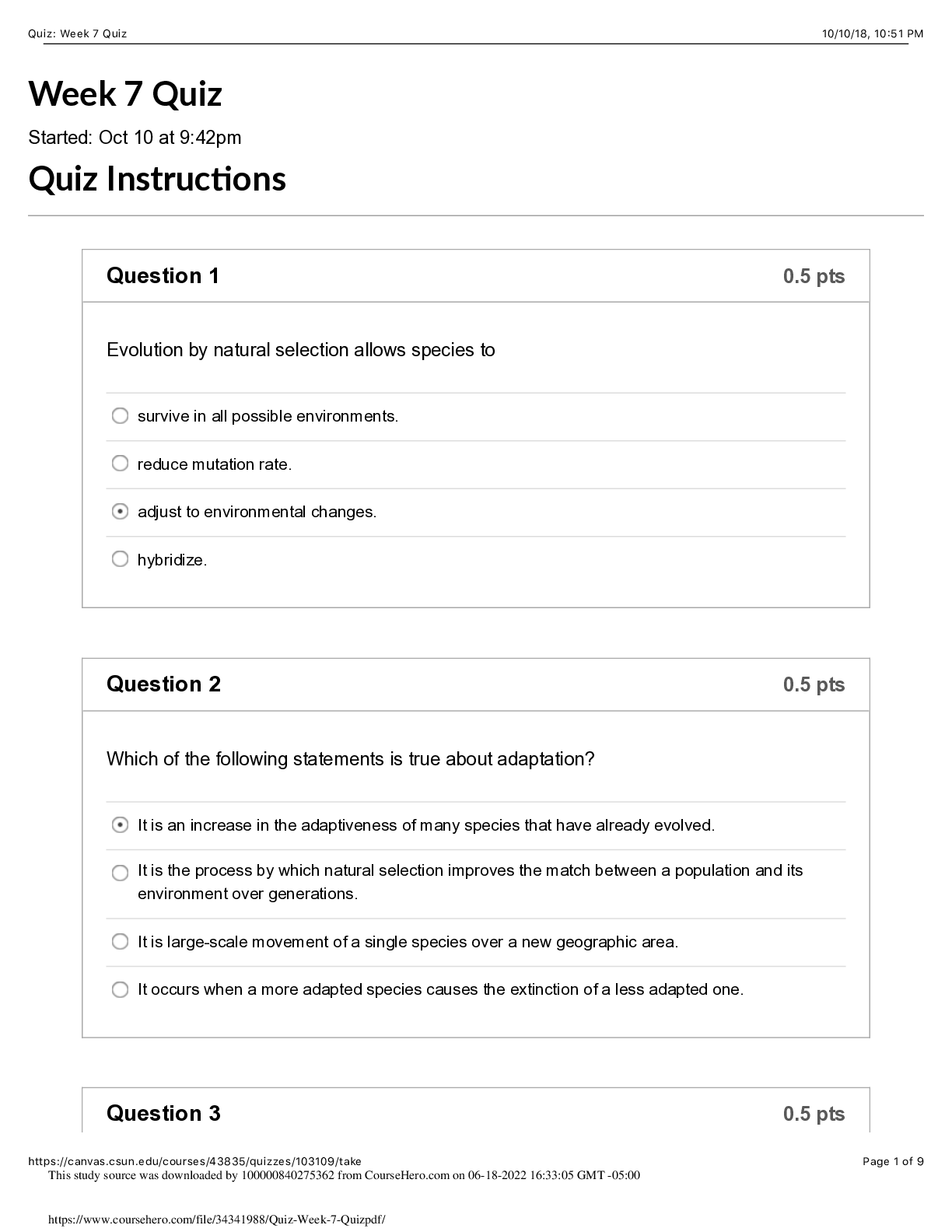
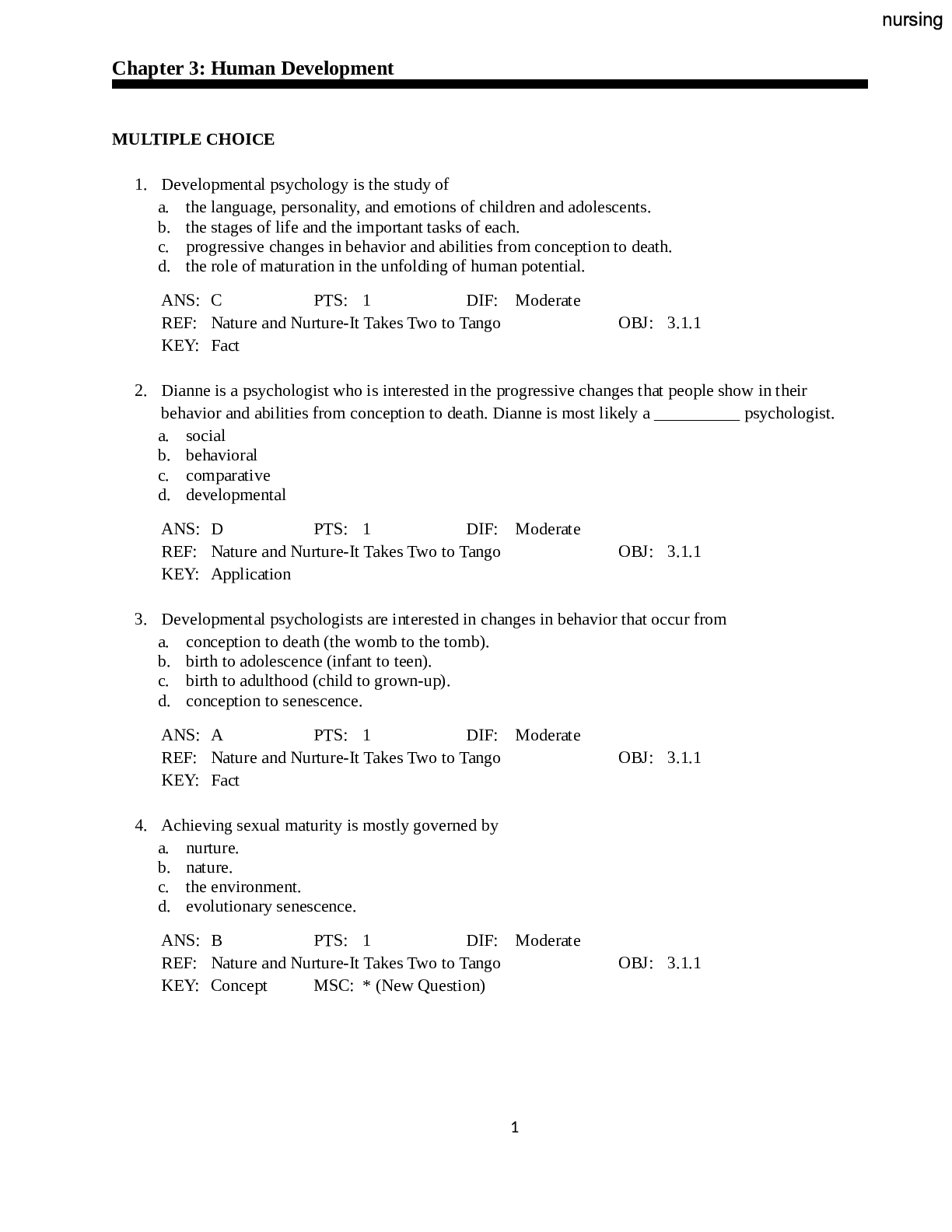

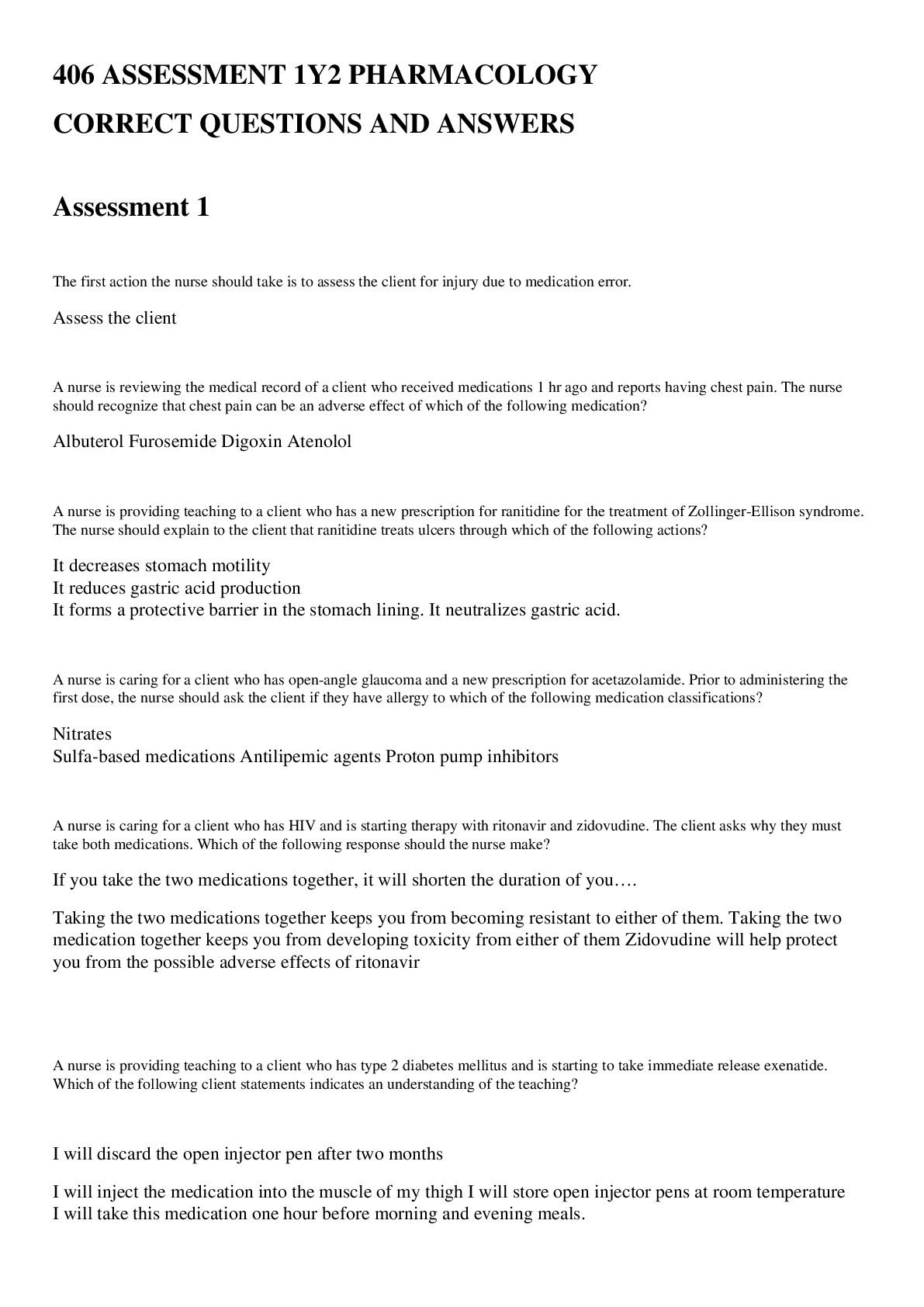
.png)




.png)
, All Correct, Download to Score A.png)
, Correct, Download to Score A.png)
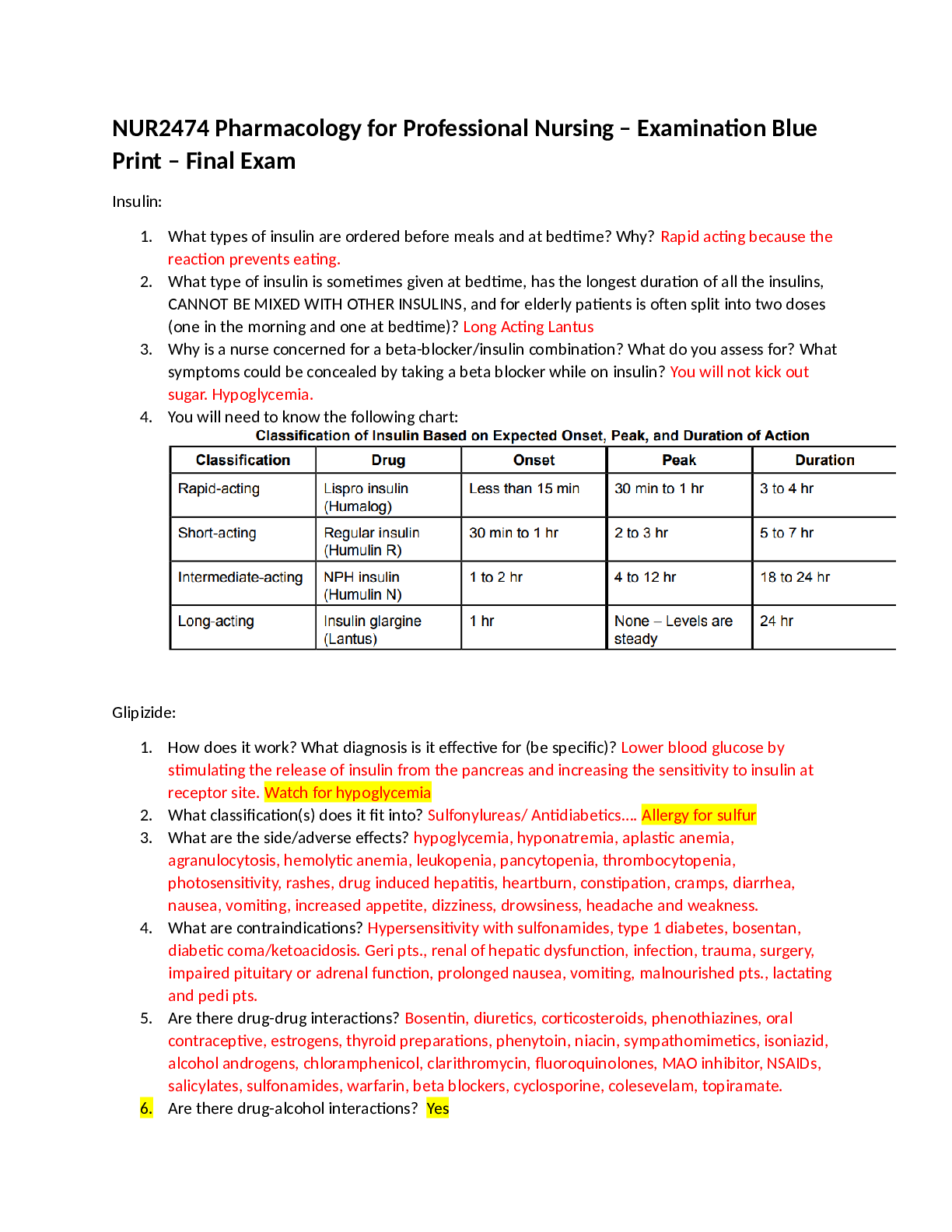


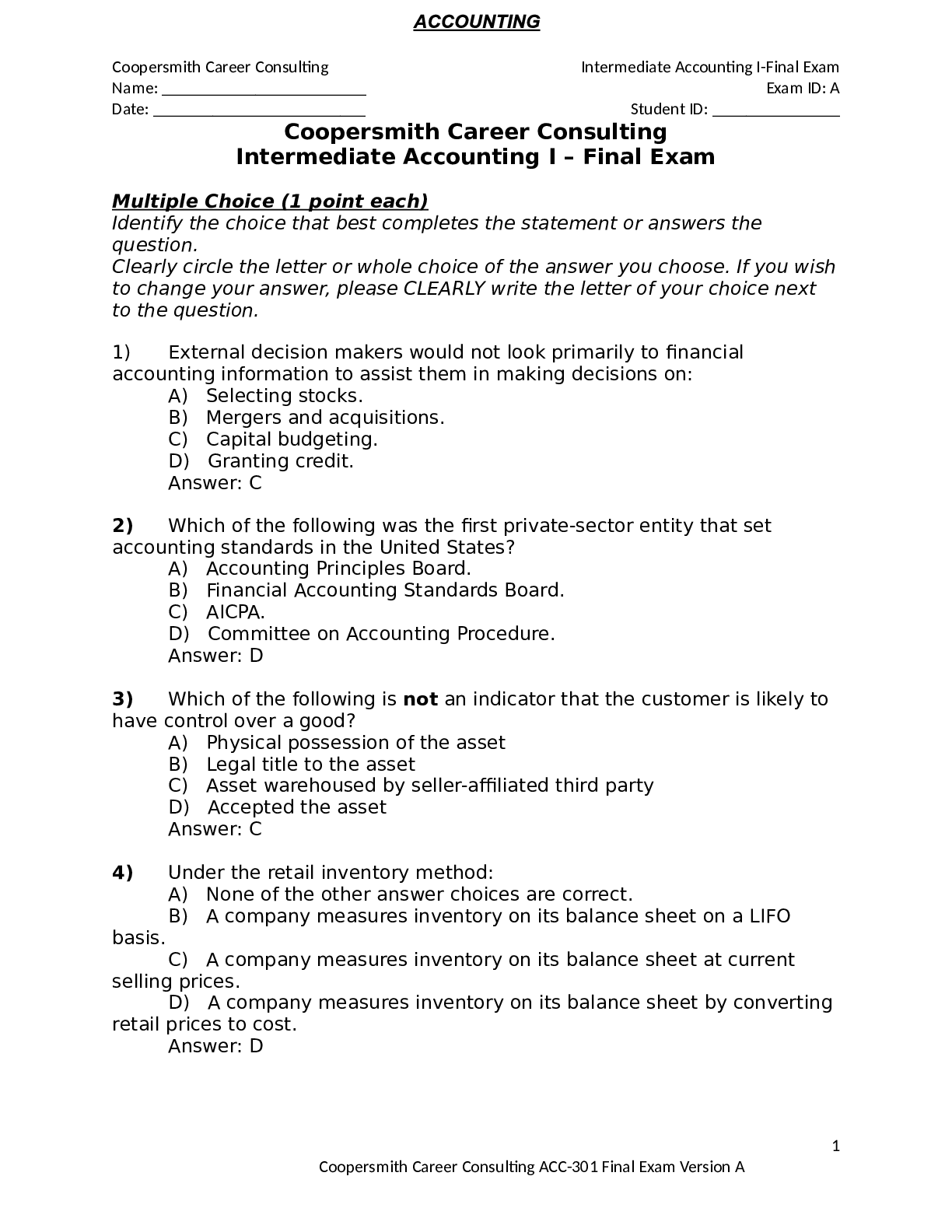
.png)


